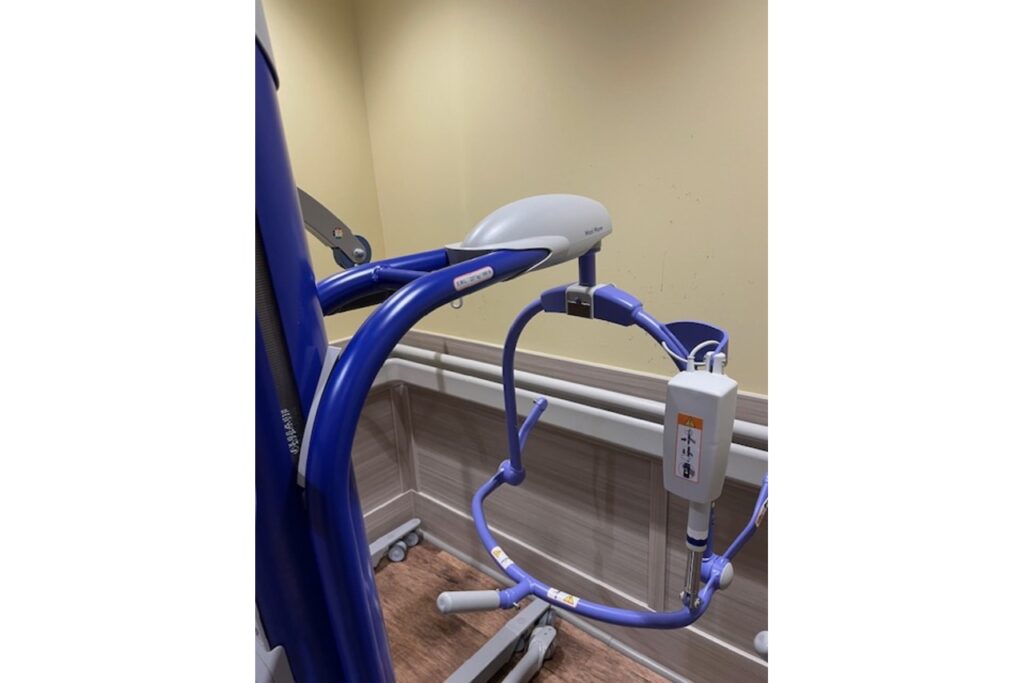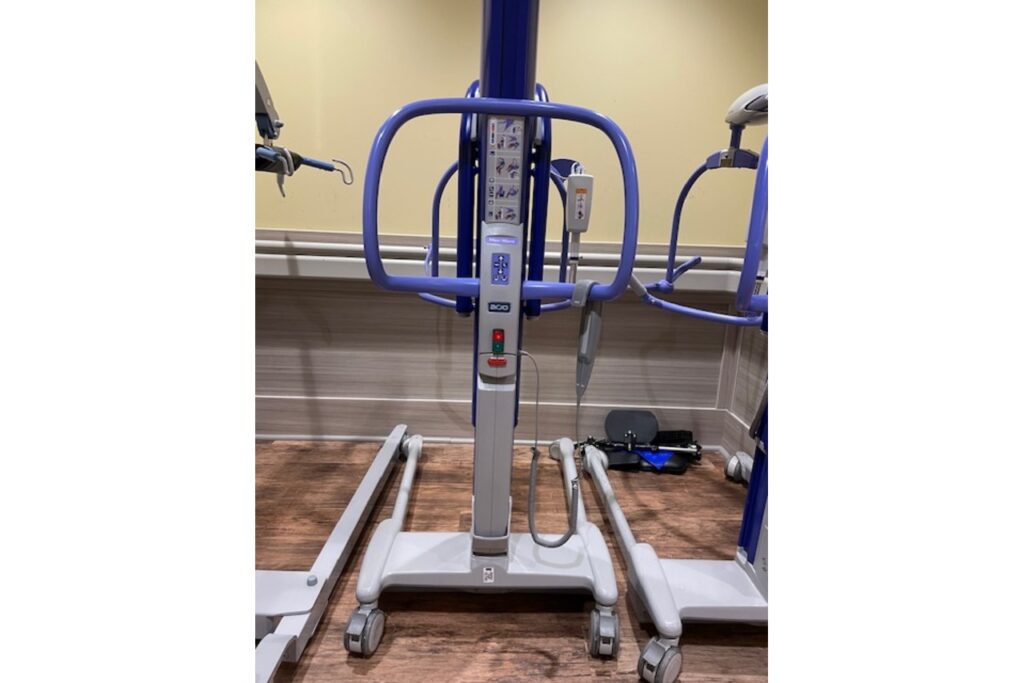Introduction to the Hoyer Lift
In healthcare ensuring safety and comfort is paramount. One mobility tool that has revolutionized the way caregivers and healthcare professionals operate is the Hoyer lift. This device not only facilitates safer patient transfers but also enhances the quality of life for both patients and their caregivers. In this post, we’ll explore the myriad benefits of using a Hoyer lift, with a special focus on its role in occupational therapy. Whether you are a healthcare professional looking to improve your practice or an older adult seeking to understand how this tool can assist in daily life, this guide is for you.
Understanding the Need Challenges Faced by Older Adults and Healthcare Professionals
The aging process comes with its own set of challenges, particularly when it involves mobility. Many older adults find themselves struggling with simple tasks like moving from a bed to a chair, which can lead to frustration and a sense of lost independence. For healthcare professionals, these situations demand delicate handling and immense physical effort, often leading to caregiver burnout or injury.
Compounding the issue is an emotional burden. Both patients and caregivers can experience anxiety during transfer processes, fearing potential accidents like falls. This fear can hinder the effectiveness of care and the recovery process itself. The need for a solution that addresses both physical and emotional challenges is evident, and this is where the Hoyer lift comes into play.
Hoyer lifts offer a practical answer to these pressing issues. By facilitating safe and comfortable transfers, these devices help mitigate risks associated with manual lifting, allowing caregivers to focus on providing compassionate care without the physical strain. Understanding the specific needs of the elderly and their caregivers is crucial in appreciating the vital role that Hoyer lifts can play in enhancing daily living.
What is a Hoyer Lift?

The Hoyer lift is a mechanical device designed to aid in the lifting and transferring of individuals with limited mobility. Named after its inventor, Ted Hoyer, this lift provides a safe and efficient means to move individuals from one place to another without direct physical exertion from caregivers.
There are several types of Hoyer lifts available, each catering to unique needs:
- Manual Hoyer Lifts: Operated by a hydraulic pump, these lifts are a cost-effective option for facilities and homes where electricity may not be readily available. They require some physical effort to use but are highly reliable and sturdy.
- Electric Hoyer Lifts: These are powered by rechargeable batteries and offer greater ease and precision in operation. Electric lifts are ideal for environments where frequent transfers are necessary, reducing the physical toll on caregivers.
- Bariatric Hoyer Lifts: Designed to accommodate larger individuals, bariatric lifts offer increased weight capacity and reinforced frames, ensuring safety and comfort for those requiring additional support.
- Sit-to-Stand Lifts: Specifically created for individuals who can bear some weight, these lifts assist in transitioning from a sitting to a standing position, promoting independence and muscle engagement.
Each type of Hoyer lift serves a distinct purpose, and selecting the right one depends on the specific needs of the user and the caregiving environment.
The Role of Hoyer Lifts in Occupational Therapy
Occupational therapy focuses on enabling individuals to participate more fully in daily activities despite physical limitations. Hoyer lifts have become an integral tool within this field, providing support that aligns with therapeutic goals.
Hoyer lifts are typically used prior to the start of the therapy sessions. Therapists can focus on developing a patient’s strength and coordination without the added risk of injury from manual transfers. This use of technology allows both therapists and patients to concentrate on rehabilitation and skill-building.
Hoyer lifts help occupational therapists tailor sessions more effectively by allowing the patient to conserve energy with the transfer process. With reduced risk of injury, therapists can try new techniques and exercises that were previously too challenging. This flexibility opens new pathways for patient improvement, making Hoyer lifts indispensable in modern therapeutic practices.
The inclusion of Hoyer lifts as a precursor to occupational therapy sessions not only benefits patients physically but also boosts their confidence. Knowing they can be transferred safely encourages active participation and engagement in therapeutic activities, accelerating recovery and autonomy.
Benefits of Using the Hoyer Lift in Daily Activities
The presence of a Hoyer lift can transform everyday routines for older adults and their caregivers. Here are some of the key benefits:
- Enhanced Safety: Reducing the risk of falls and injuries during transfers is a primary advantage. Hoyer lifts provide a secure and stable mechanism for moving individuals, ensuring physical safety for both users and caregivers.
- Increased Comfort: The gentle and controlled movement offered by Hoyer lifts minimizes discomfort during transfers. This is particularly beneficial for individuals experiencing pain or sensitivity due to medical conditions.
- Empowered Independence: By facilitating easier movement, Hoyer lifts empower individuals to participate more fully in their daily routines. This sense of independence can dramatically improve mental health and quality of life.
These benefits extend beyond individual users, positively impacting caregivers by reducing physical strain and improving overall caregiving efficiency.
How to Choose the Right Hoyer Lift for Different Scenarios

Selecting the appropriate Hoyer lift is essential in maximizing its benefits. Here are factors to consider:
- User Needs: Assess the mobility level, weight, and specific health conditions of the individual using the lift. Each type of Hoyer lift is designed for different levels of support and mobility, so choosing one that meets the user’s needs is crucial.
- Environment: Consider the setting where the lift will be used. For home use, compact and maneuverable lifts may be preferred, while healthcare facilities may require more robust, versatile models to accommodate various patients.
- Budget and Maintenance: While cost is a consideration, it’s important to prioritize quality and safety. Additionally, consider long-term maintenance requirements and whether certain models offer better longevity and reliability.
Choosing the right Hoyer lift involves balancing user needs with practical considerations, ensuring the best outcomes for both patients and caregivers.
Maintenance and Safety Tips for Hoyer Lifts
To ensure continued safe and effective operation, regular maintenance of Hoyer lifts is essential. Here are some tips:
- Routine Inspections: Regularly check for signs of wear or damage, such as frayed slings or loose bolts. Prompt attention to these issues can prevent accidents and extend the life of the equipment.
- Cleaning Protocols: Keep the lift clean and free of debris. Follow manufacturer guidelines for cleaning to maintain hygiene and functionality, especially in shared or clinical settings.
- Proper Training: Ensure all operators are adequately trained in the use of Hoyer lifts. Understanding how to operate the lift correctly minimizes the risk of accidents and maximizes user benefits.
By adhering to these maintenance and safety practices, caregivers can ensure the longevity and reliability of Hoyer lifts, maintaining their performance in providing essential support.
Conclusion The Positive Impact of Hoyer Lifts on Quality of Life
Hoyer lifts have become a critical component in improving care for older adults and supporting healthcare professionals. By offering a safe, efficient, and comfortable method of transferring individuals, they significantly enhance quality of life and caregiving practices.
Hoyer lifts empower independence, improve safety, and ensure comfort. Their role in facilitating better care and recovery is indisputable, making them an asset in any caregiving environment.
The information provided on this website is for general informational purposes only. It is not intended as, nor should it be considered, professional or medical advice. Always consult a professional regarding your specific medical issue.
Frequently Asked Questions About Hoyer Lifts
What is a Hoyer lift and how does it operate?
A Hoyer lift is a mechanical device designed to assist in lifting and transferring individuals with mobility challenges. It operates using a hydraulic pump or electric motor to smoothly raise or lower a person, utilizing a sling to support and secure the user during the transfer.
Who can benefit from using a Hoyer lift?
Individuals with limited mobility, particularly older adults or those recovering from surgery or injury, can greatly benefit from a Hoyer lift. Caregivers also experience reduced physical strain, as the lift aids in safely transferring patients without the need for manual lifting.
How do I select the right Hoyer lift for home use?
Choosing the right Hoyer lift for home use involves considering the user’s specific mobility needs, the dimensions of the home environment, and the budget available. It’s essential to match the lift’s features with the individual’s requirements to ensure comfort and safety.
What maintenance is required to keep a Hoyer lift in good working condition?
Routine maintenance is crucial for the effective operation of a Hoyer lift. Regularly inspect the lift for wear and tear, maintain cleanliness, and conduct periodic checks on mechanical parts to ensure they are functioning correctly. Adhering to manufacturer guidelines can prevent malfunctions and prolong the lift’s lifespan.
How can proper training enhance the use of a Hoyer lift?
Proper training ensures that caregivers understand the correct procedures for operating a Hoyer lift, reducing the risk of accidents and maximizing its efficiency. Training sessions should cover all aspects of the lift’s use, including how to securely position the sling and operate the controls.
References
- Jones, A. (2020). Innovations in Mobility Devices: An Overview of Hoyer Lifts and Their Impact. Journal of Health Care Equipment, 15(3), 45-60.
- Smith, L., & Thompson, R. (2019). Safety and Efficiency in Caregiving: The Role of Hoyer Lifts. International Journal of Geriatric Nursing, 12(2), 100-110.
- White, M. (2021). Understanding Patient Transfer Devices: A Caregiver’s Guide. Home Health Care Today, 23(5), 114-127.
- Williams, F. M. (2022). The Essential Guide to Mobility Support Devices. Elder Care Insights, 29(8), 30-45.
- Brown, C., & Green, P. (2018). Best Practices for Maintenance and Use of Hoyer Lifts in Clinical Settings. Clinical Equipment Management Journal, 8(4), 65-78.
Recently Featured OT Insider Posts
The Shower Chair: How it’s Used to Manage Independence
How to Create a Sensory-Friendly Halloween for Children
Dx Medical Abbreviation: Everything You Need to Know
The Front Wheeled Walker: How to Manage Mobility in Rehab
PO Medical Abbreviation: Everything You Need to Know
Hemi Walker: How It’s Used in Rehabilitative Therapy
PCN Medical Abbreviation: Everything You Need to Know
ETOH Medical Abbreviation: Everything Your Need to Know
HS Medical Abbreviation: Understanding Hidradenitis Suppurativa
